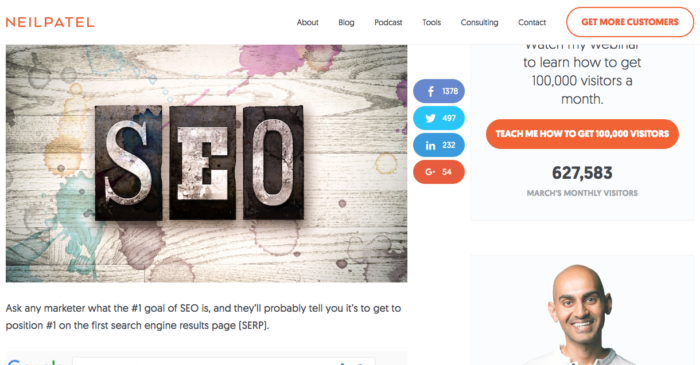Optimizing your blog posts is a very involved but necessary process to maximize visibility. Not only do you have to consider SEO and readability, but you also have to consider the shareability of your post. Here’s a helpful guide so you can optimize blog posts to increase visibility.
How to Optimize Blog Posts to Increase Visibility
Optimize Your Blog Posts for Readers
When your target audience conducts a web search, they are seeking information. You want your content to be the solution.
It’s no secret that Google’s algorithm favors quality content. In fact, quality content is the top ranking factor for Google.
Here are a few factors to consider if you want your content to perform well.
1. Does Your Post Have a Clear Takeaway?
Have you ever spent time reading an article and made your way all the way through to the end, only to be left wondering, “what was the point?”
One of the most disappointing experiences for any reader is to consume a piece of content that provides no real value. Just confusion.
To make sure your takeaway is clear, ask yourself the following questions:
What point do I want to make?
Am I strictly focusing on one topic or idea?
Does my entire blog post support this key idea?
2. Is Your Content Truly Valuable?
While having a clear takeaway is important, focused content is only half the battle. You also want to make sure you are creating content that is valuable for your audience.
An easy way to create valuable content is to develop an understanding of your audience’s wants and needs then produce content that speaks to their desires and pain points.
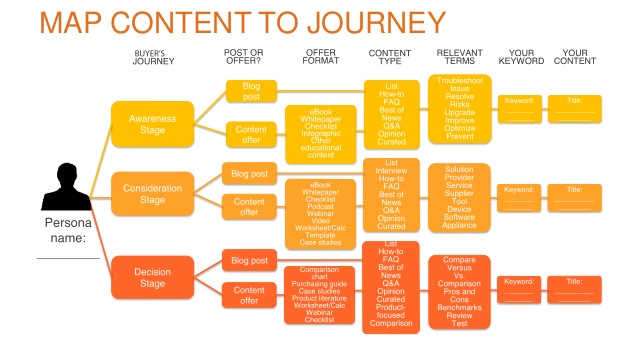
If you have a product or service, you can create valuable content by developing content to correspond with the stages of your buyer’s journey. Here’s how:
Step 1: Research and define your buyer personas.
Step 2: Map your buyer journey.
Step 3: Create content for buyers at different stages.
The key to successfully creating valuable content is to fully understand and meet the needs of your target audience.
3. Is Your Post Visually Appealing?
Content is everywhere and competition for eyeballs is fierce. Creating a visually attractive post is critical if you want to lure readers and get clicks, shares and backlinks.
Break-ups and emphases make your posts easy on the eyes. To make sure your audience has a pleasant experience while consuming your content, don’t be afraid to mix things up a bit.
Formatting
Your content should be easy to scan and read. 43% of people admit to skimming blog posts according to research conducted by Hubspot.
Break up text and highlight key points with:
- Bullets
- Numbered lists
- block quotes
- italics and bold
White Space
Adding white space is a quick trick for separating your text into easily digestible chunks. To prevent your post from looking like a sea of text, add a breakup every few lines.
Headings
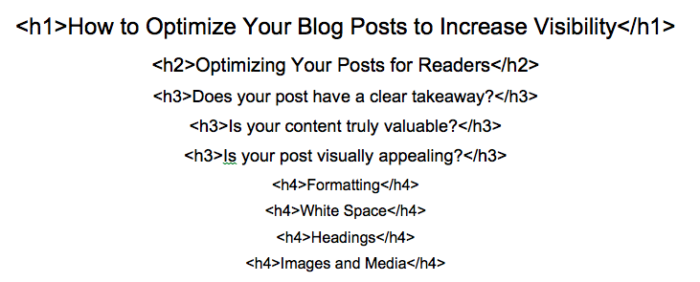 A popular way to quickly separate your blog post into sections is by adding headers and subheaders. Not only do they make your blog posts look better, they also help drive home your key takeaways, especially for skimmers.
A popular way to quickly separate your blog post into sections is by adding headers and subheaders. Not only do they make your blog posts look better, they also help drive home your key takeaways, especially for skimmers.
Images and Media

Adding images and media is another way to ensure your content is visually inviting. Incorporate photos, GIFs, and video to keep readers’ attention.
If you are building a brand on a budget, consider these free resources:
- Free Stock Photos: Pexels, Unsplash, Startup Stock Photos, Burst
- Create Video: Animoto, Magisto, WeVideo
Optimize Your Blog Posts for Search
To attract visitors to your blog from search engines, you must optimize your blog posts for search. Your goal is to appear in the top organic results and land a spot on page one.
1. Keywords
Before you can select keywords to maximize visibility, you must first understand which keywords are being used. You discover which keywords to target through keyword research.
Step 1: Start by making a list of different variations of your topic (ex. optimize blog posts, optimize content, optimize articles).
Step 2: Use Google Keyword Planner to find out search volume for potential keywords.
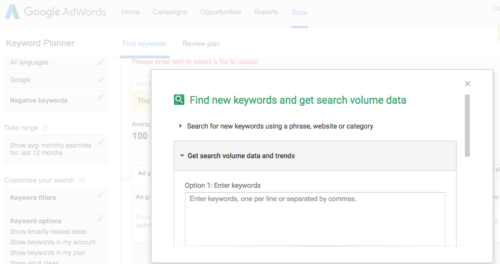
Step 3: Select long-tail keywords that you will have the best chance of ranking for
Step 4: Optimize your post for selected long-tail keywords.
2. Title
You want your title to both rank in search engine results and attract readers. Before readers encounter a single sentence of your post, they see your title. These few words can easily determine whether or not your audience will click through to your article.
Your content can be extremely valuable but if you do not have an attractive title, your click through will be low.
Best Practices to Optimize Your Title
- Length: If you want to make sure your entire title is visible, aim for a title between 50-60 characters long. Titles that are 55 characters long tend to earn the highest number of click-throughs. Aim for 6-13 words to attract the highest and most consistent amount of traffic.
- Keyword Placement: Include your keyword close to the beginning.
- Trigger: A compelling title entices potential readers to click and draws traffic. Use words that appeal to emotion and desire.
Use Coschedule Headline Analyzer to generate a search preview and check title length.
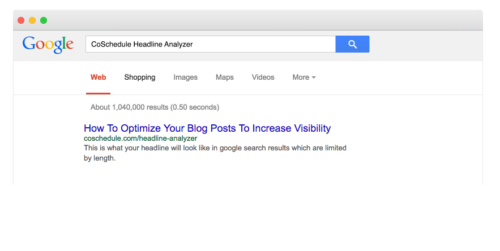
3. URL
Your URL should accurately reflect your blog post topic. Opt for simple, clear, and concise URLs. Don’t forget to include your keyword. For example,
yoursite.com/primary-keyword
4. Meta Description
When your post appears in search results for your keyword, your meta description is displayed. I like to think of meta descriptions as elevator pitches for blog posts. A good meta description can mean the difference between someone clicking your link versus a competitor’s when you appear on the same page of search results.
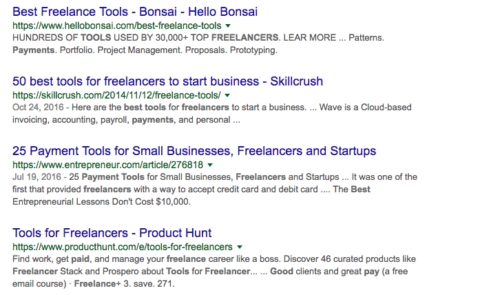
Here are a few guidelines to follow:
- Length: Keep your meta description under 150 characters
- Copy: Set expectations for what your post is about and increase interest to motivate click-through
- Include keywords- keywords that match the user’s search will appear in bold and signal relevance
5. Links
Both internal and external links add value to your posts. You can make your post highly useful by linking to other relevant content sources. Try for a minimum of 3-4 linking opportunities per post. Select authority sites for external links.
6. Alt Text and Descriptions
Image optimization is often overlooked. Search engines can’t “see” images so they rely on the alt tag to collect information about images.
Be sure to include alt text for images to increase the chances of your images displaying in search results.
Optimize Your Blog Posts for Engagement
The final category for optimizing your blog posts to increase visibility is engagement. Not only do you want to create quality content that is optimized for SEO but you also want to optimize your posts for engagement to maximize visibility.
1. Social Sharing Buttons
Add social sharing buttons to your site to leverage social proof and encourage sharing. Popular positioning is floating social buttons along the left or right column of a blog post. Floating buttons remain visible as readers scroll through the post, giving them the option to share your post at any given time.
2. Call to Action
Because we don’t create content for content’s sake, a call to action is a critical concluding element. This is especially important if you are mapping your content to your buyer’s journey.
Think back to your purpose for writing and ask yourself one key question: What do I want my readers to do?
Do you want them to:
- share your post
- leave a comment
- register for an event
- download a guide
- make a purchase
Think about your goals and use content to achieve them.
What do you think? I’d love to hear your thoughts. Let’s get the conversation going in the comments section below.



